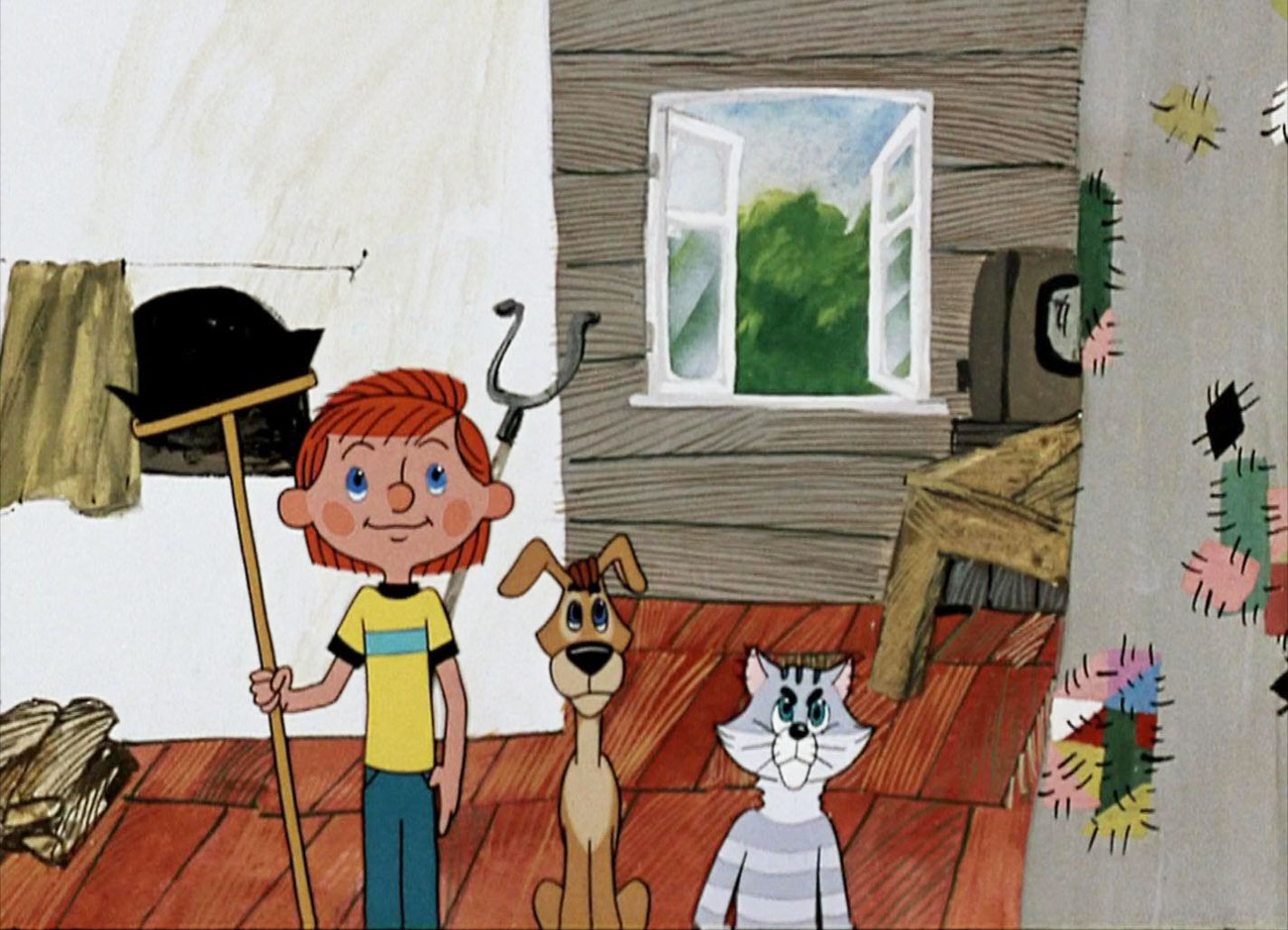Numerous Russian animated fairytales are available in English

'Three from Prostokvashino.'
kinopoisk.ruRussian literature has always been rich in fairytales: from cautionary folktales and fables to engrossing modern stories. Many of them have been adapted for the screen and translated into English.
From time immemorial
The history of the Russian fairytale originated in storytelling, when tales had not yet been committed to paper but were instead transmitted orally. A number of these tales have survived. One of them is Petushok the Golden Cock Comb.
Petushok the Golden cock comb with English subtitles. Source: Youtube/ Zhurka75
Almost every Russian child knows this story about three kind and honest friends – the Cat, the Thrush and the Cock – and their adversary, the cunning Fox. This is a traditional tale about the victory of a clear mind over craftiness. It was filmed in 1955 by Soyuzmultfilm (Union Cartoon) – the Soviet Union’s and later Russia’s top animation studio.
The Princess Frog is another great folklore piece that still has resonance today. Vasilisa the Wise, the protagonist, is a well-known character in Russian folktales, as is the antagonist Koschei the Deathless, something like a Slavic Lord Voldemort.
The Princess Frog with English subtitles. Source: Youtube / Russian Animation
In The Princess Frog Vasilisa is deceived by Koschei and turned into a frog, and as in lots of Russian folktales, only true love can rescue the beauty from the beast.
The golden fairytale age
The great classics of Russian literature gave the world profound novels, but also incomparable fairytales. Alexander Pushkin is considered to be one of Russia’s best children’s writers. His The Tale of Tsar Saltan and The Tale of the Dead Princess and the Seven Knights are considered masterpieces of the genre. All of Pushkin’s stories combine a breathtaking plot with beautiful poetical language. Pushkin’s The Tale of Fisherman and the Fish is an instructive and moral story that might be of interest for children, as well as adults. It won The Best Cartoon award at the VI Karlovy Vary International Film Festival in 1951.
Anther notable work is The Little Humpbacked Horse by Pyotr Yershov. This cartoon is one of the most impressive and colorful in the Soyuzmultfilm repertoire. Something akin to a national tale, it is quite distinctive in terms of its folk humor and authenticity. It was inspired by the story of the Firebird, a major figure in Slavic folklore. The Firebird is a magical glowing bird that can be either a blessing or a curse to its possessor.
The Little Humpbacked Horse. Source: Youtube / Russian Animation
Modern classic
In 20th century Russian children’s literature there are two recognized pillars. One is Samuil Marshak with his story, The Twelve Months. It is an incredible tale about one girl who is forced to find the spring flower snowdrops in the month of January. The tale is directed at children but also adults, with its ridicule of the absolutist system of governance.
Another master of 20th century fairytales is Eduard Uspensky. His first children’s book Uncle Fedya, His Dog and His Cat was published in 1973 and was filmed as a three-part-cartoon five years later (See video from the first part below, Part 2, Part 3).
Three from Prostokvashino. Source: Youtube / S G
It tells the story of the precocious city boy Uncle Fedya who runs away from home to live in the village of Prostokvashino. He is joined by a humorous talking cat and a trusting and very faithful dog. This cartoon instantly became a classic of Soviet and Russian animation.
Read more: How Russian animation 'Masha and the Bear' won the hearts of the world
All rights reserved by Rossiyskaya Gazeta.
Subscribe
to our newsletter!
Get the week's best stories straight to your inbox